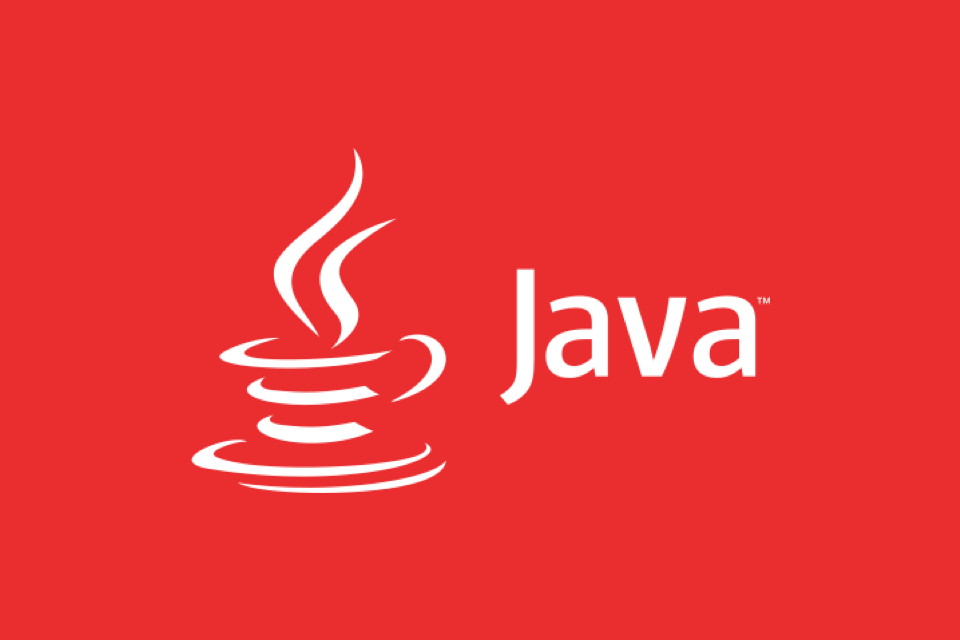Message queue is a cross-process communication mechanism used to implement asynchronous processing, decoupling and traffic peak cutting. Its core functions include: 1. Decoupling the sender and the receiver; 2. Asynchronization improves the response speed; 3. Buffering high concurrent requests. The mainstream message queues in Java include RabbitMQ (suitable for scenarios with high reliability requirements), Kafka (suitable for high throughput scenarios), ActiveMQ (suitable for good compatibility but average performance), and RocketMQ (suitable for large-scale distributed systems). When using it, you need to pay attention to information loss, repeated consumption, performance tuning and operation and maintenance costs.

Asynchronous communication is crucial in modern distributed systems, and Java Message Queue is an important tool to achieve this goal. Using message queues allows loose coupling between different components, improve system response speed, and enhance fault tolerance. If you are considering implementing asynchronous communication in Java, it is necessary to understand several mainstream message queueing schemes and their applicable scenarios.

What is a message queue? Why do you need it?
Simply put, message queues are a communication mechanism across processes or services. The producer sends the task to the queue, and the consumer takes it out of the queue and processes it. The benefits of this approach are:
- Decoupling : The sender and the receiver do not need to be online at the same time
- Peak cutting and valley filling : When dealing with high concurrent requests, the flow can be buffered
- Asynchronous processing : improve the response speed of the overall system
For example, after a user places an order, he does not immediately perform operations such as sending emails and deducting inventory, but instead throws these tasks into the queue and is processed slowly by the background.

Several commonly used message queueing techniques in Java
Currently, in the Java ecosystem, there are the following common message queues:
- RabbitMQ : An old-fashioned messaging middleware, powerful functions, supports multiple protocols, and is suitable for scenarios with high reliability requirements.
- Kafka : is known for its high throughput, suitable for scenarios such as big data log collection, real-time stream processing, etc.
- ActiveMQ : An old-fashioned product under Apache, with good compatibility, but its performance is not as good as Kafka and RabbitMQ.
- RocketMQ : Alibaba's open source product, emphasizing high availability and distributed features, suitable for large-scale systems.
Which message queue to choose depends mainly on your business needs. for example:

- If it is a scenario such as order processing and payment notifications that are not sensitive to delay but require reliability, RabbitMQ is a good choice;
- If it is a scenario where log collection, monitoring data, etc. requires high throughput, Kafka is more suitable;
- If you are already using the Alibaba Cloud ecosystem, RocketMQ may be easier to integrate.
How to use message queues in Java?
Taking RabbitMQ as an example, the basic process is as follows:
-
Introducing client dependencies (Maven):
<dependency> <groupId>com.rabbitmq</groupId> <artifactId>amqp-client</artifactId> <version>5.21.0</version> </dependency> Establish connections and channels:
ConnectionFactory factory = new ConnectionFactory(); factory.setHost("localhost"); Connection connection = factory.newConnection(); Channel channel = connection.createChannel();Declare the queue and send a message:
channel.queueDeclare("task_queue", false, false, false, null); String message = "Hello World!"; channel.basicPublish("", "task_queue", null, message.getBytes());Consumer side monitor messages:
DeliverCallback deliverCallback = (consumerTag, delivery) -> { String msg = new String(delivery.getBody(), "UTF-8"); System.out.println("Message received:" msg); }; channel.basicConsume("task_queue", true, deliverCallback, consumerTag -> {});
This is just a simple example. In actual development, it also needs to deal with issues such as retry, dead letter queue, and confirmation mechanism.
Issues to be aware of when using message queues
- Message loss problem : Make sure to enable persistence and manual confirmation mode to avoid messages being lost without being consumed correctly.
- Repeated consumption problem : When designing consumer logic, idempotence must be ensured, such as deduplication through unique ID.
- Performance bottleneck : Reasonably set parameters such as the number of threads, prefetches, etc. to avoid resource waste or blockage.
- Operation and maintenance cost : As an infrastructure, the deployment, monitoring and expansion of the message queue requires energy.
Some teams will directly use MQ services provided by cloud manufacturers (such as AWS SQS, Alibaba Cloud RocketMQ), which can save a lot of operation and maintenance work.
Basically that's it. Mastering the usage and applicable scenarios of message queues can help you to be at ease when building high-performance and scalable applications.
The above is the detailed content of Java Message Queues for Asynchronous Communication. For more information, please follow other related articles on the PHP Chinese website!

Hot AI Tools

Undress AI Tool
Undress images for free

Undresser.AI Undress
AI-powered app for creating realistic nude photos

AI Clothes Remover
Online AI tool for removing clothes from photos.

Clothoff.io
AI clothes remover

Video Face Swap
Swap faces in any video effortlessly with our completely free AI face swap tool!

Hot Article

Hot Tools

Notepad++7.3.1
Easy-to-use and free code editor

SublimeText3 Chinese version
Chinese version, very easy to use

Zend Studio 13.0.1
Powerful PHP integrated development environment

Dreamweaver CS6
Visual web development tools

SublimeText3 Mac version
God-level code editing software (SublimeText3)

Hot Topics
 What is the `enum` type in Java?
Jul 02, 2025 am 01:31 AM
What is the `enum` type in Java?
Jul 02, 2025 am 01:31 AM
Enums in Java are special classes that represent fixed number of constant values. 1. Use the enum keyword definition; 2. Each enum value is a public static final instance of the enum type; 3. It can include fields, constructors and methods to add behavior to each constant; 4. It can be used in switch statements, supports direct comparison, and provides built-in methods such as name(), ordinal(), values() and valueOf(); 5. Enumeration can improve the type safety, readability and flexibility of the code, and is suitable for limited collection scenarios such as status codes, colors or week.
 What is the interface segregation principle?
Jul 02, 2025 am 01:24 AM
What is the interface segregation principle?
Jul 02, 2025 am 01:24 AM
Interface Isolation Principle (ISP) requires that clients not rely on unused interfaces. The core is to replace large and complete interfaces with multiple small and refined interfaces. Violations of this principle include: an unimplemented exception was thrown when the class implements an interface, a large number of invalid methods are implemented, and irrelevant functions are forcibly classified into the same interface. Application methods include: dividing interfaces according to common methods, using split interfaces according to clients, and using combinations instead of multi-interface implementations if necessary. For example, split the Machine interfaces containing printing, scanning, and fax methods into Printer, Scanner, and FaxMachine. Rules can be relaxed appropriately when using all methods on small projects or all clients.
 Asynchronous Programming Techniques in Modern Java
Jul 07, 2025 am 02:24 AM
Asynchronous Programming Techniques in Modern Java
Jul 07, 2025 am 02:24 AM
Java supports asynchronous programming including the use of CompletableFuture, responsive streams (such as ProjectReactor), and virtual threads in Java19. 1.CompletableFuture improves code readability and maintenance through chain calls, and supports task orchestration and exception handling; 2. ProjectReactor provides Mono and Flux types to implement responsive programming, with backpressure mechanism and rich operators; 3. Virtual threads reduce concurrency costs, are suitable for I/O-intensive tasks, and are lighter and easier to expand than traditional platform threads. Each method has applicable scenarios, and appropriate tools should be selected according to your needs and mixed models should be avoided to maintain simplicity
 Differences Between Callable and Runnable in Java
Jul 04, 2025 am 02:50 AM
Differences Between Callable and Runnable in Java
Jul 04, 2025 am 02:50 AM
There are three main differences between Callable and Runnable in Java. First, the callable method can return the result, suitable for tasks that need to return values, such as Callable; while the run() method of Runnable has no return value, suitable for tasks that do not need to return, such as logging. Second, Callable allows to throw checked exceptions to facilitate error transmission; while Runnable must handle exceptions internally. Third, Runnable can be directly passed to Thread or ExecutorService, while Callable can only be submitted to ExecutorService and returns the Future object to
 Best Practices for Using Enums in Java
Jul 07, 2025 am 02:35 AM
Best Practices for Using Enums in Java
Jul 07, 2025 am 02:35 AM
In Java, enums are suitable for representing fixed constant sets. Best practices include: 1. Use enum to represent fixed state or options to improve type safety and readability; 2. Add properties and methods to enums to enhance flexibility, such as defining fields, constructors, helper methods, etc.; 3. Use EnumMap and EnumSet to improve performance and type safety because they are more efficient based on arrays; 4. Avoid abuse of enums, such as dynamic values, frequent changes or complex logic scenarios, which should be replaced by other methods. Correct use of enum can improve code quality and reduce errors, but you need to pay attention to its applicable boundaries.
 Understanding Java NIO and Its Advantages
Jul 08, 2025 am 02:55 AM
Understanding Java NIO and Its Advantages
Jul 08, 2025 am 02:55 AM
JavaNIO is a new IOAPI introduced by Java 1.4. 1) is aimed at buffers and channels, 2) contains Buffer, Channel and Selector core components, 3) supports non-blocking mode, and 4) handles concurrent connections more efficiently than traditional IO. Its advantages are reflected in: 1) Non-blocking IO reduces thread overhead, 2) Buffer improves data transmission efficiency, 3) Selector realizes multiplexing, and 4) Memory mapping speeds up file reading and writing. Note when using: 1) The flip/clear operation of the Buffer is easy to be confused, 2) Incomplete data needs to be processed manually without blocking, 3) Selector registration must be canceled in time, 4) NIO is not suitable for all scenarios.
 How Java ClassLoaders Work Internally
Jul 06, 2025 am 02:53 AM
How Java ClassLoaders Work Internally
Jul 06, 2025 am 02:53 AM
Java's class loading mechanism is implemented through ClassLoader, and its core workflow is divided into three stages: loading, linking and initialization. During the loading phase, ClassLoader dynamically reads the bytecode of the class and creates Class objects; links include verifying the correctness of the class, allocating memory to static variables, and parsing symbol references; initialization performs static code blocks and static variable assignments. Class loading adopts the parent delegation model, and prioritizes the parent class loader to find classes, and try Bootstrap, Extension, and ApplicationClassLoader in turn to ensure that the core class library is safe and avoids duplicate loading. Developers can customize ClassLoader, such as URLClassL
 Exploring Different Synchronization Mechanisms in Java
Jul 04, 2025 am 02:53 AM
Exploring Different Synchronization Mechanisms in Java
Jul 04, 2025 am 02:53 AM
Javaprovidesmultiplesynchronizationtoolsforthreadsafety.1.synchronizedblocksensuremutualexclusionbylockingmethodsorspecificcodesections.2.ReentrantLockoffersadvancedcontrol,includingtryLockandfairnesspolicies.3.Conditionvariablesallowthreadstowaitfor






